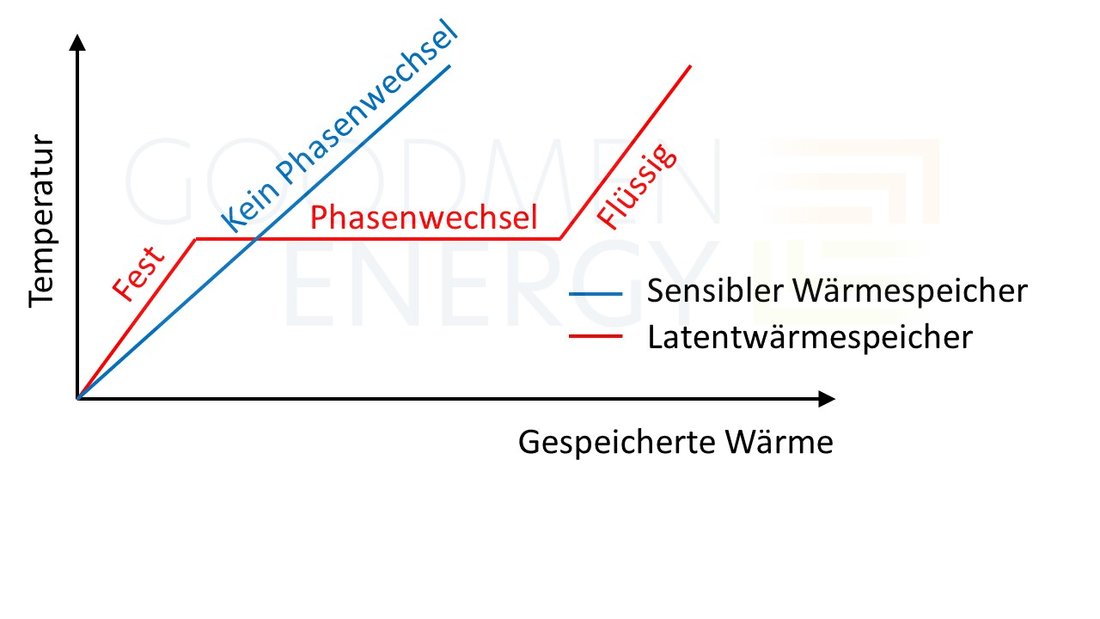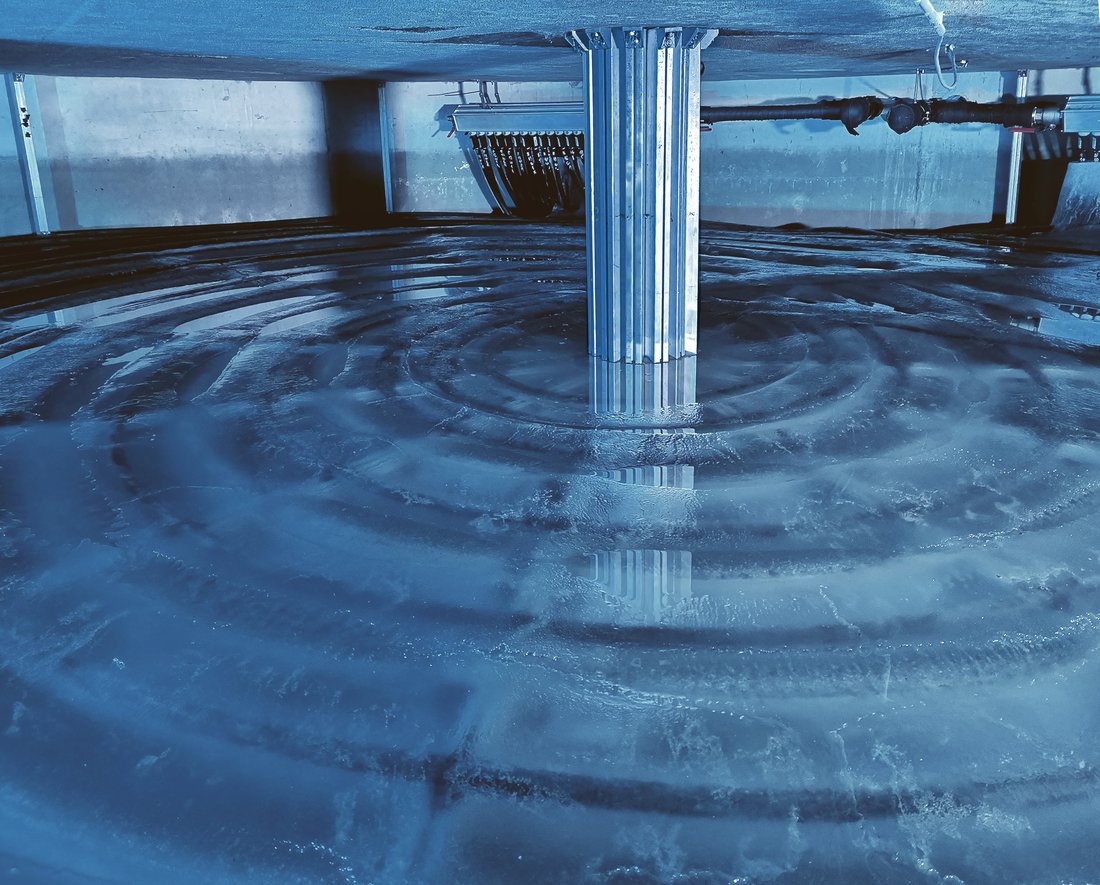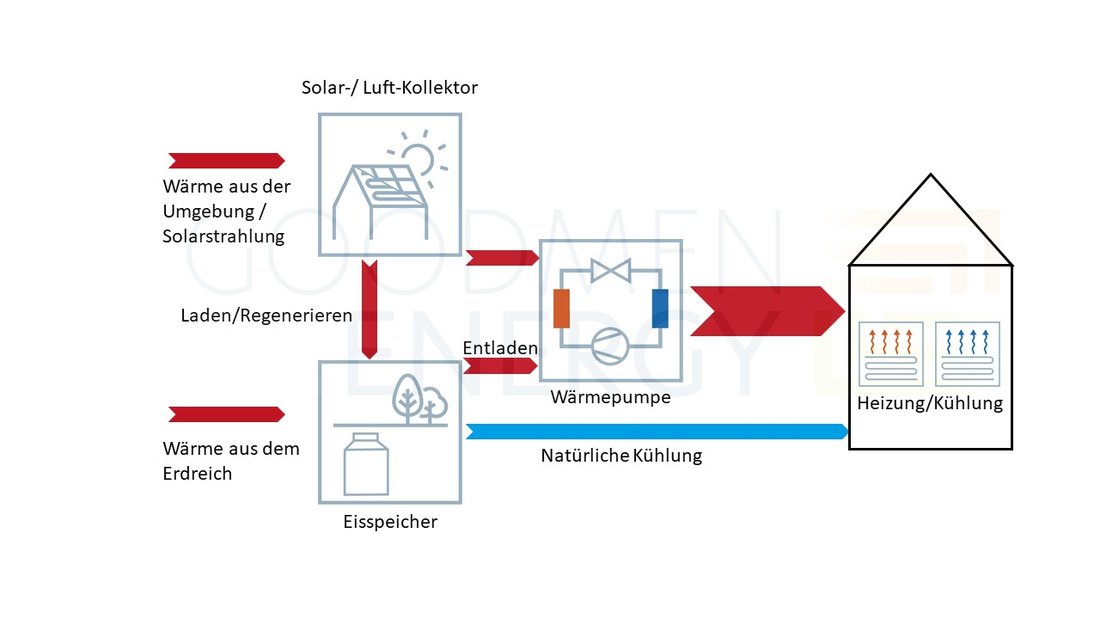Ice storage - efficiently storing energy from renewable sources
Who has ever wondered why a few ice cubes can cool an entire drink down to a pleasant drinking temperature? And how can this phenomenon be used to supply heating and cooling to buildings? The answer: with the help of an ice store. In the age of heat pumps and renewable heat sources, ice storage tanks are becoming increasingly popular. They serve the purpose of storing heat and cold and can thus balance out fluctuations in supply and demand. This increases the efficiency and cost-effectiveness of heating and cooling systems.
Ice: High storage density
Storing coolness as ice has proven its worth for thousands of years. Even the Egyptians and Romans traded in ice to use it for preserving food or in brewing. Later, ice cut on lakes in winter was stored in ice cellars and kept all year round.
When ice melts and changes from a solid to a liquid state, it absorbs energy. Quite a lot of energy. This amount of energy, called crystallisation energy, is equivalent to warming water from 0°C to 80°C. A large amount of energy can therefore be stored in a small space through this phase transition.
Conversely, it is possible to extract heat from liquid water until it is completely iced over. This means that our drink can be significantly cooled in summer by a few ice cubes. The heat needed to thaw the ice cubes is extracted from the drink.
Heat stores that use this phase change are called latent heat stores. Their storage density is significantly higher than that of a storage unit without phase change (sensitive heat storage). This is illustrated in the following diagram.
The storage volume can be roughly reduced by a factor of 6, as more energy can be stored in the same space. Due to the high storage capacity, heat sources, e.g. air heat exchangers or geothermal systems, as well as the heat pump can be dimensioned smaller.
A cooling liquid, also called brine, flows through the pipes. The freezing point of this fluid is well below 0°C. If the brine temperature is lower than that of the water in the ice store, the ice store gives off heat. If the ice storage then reaches the 0° limit during cooling, it begins to freeze. As soon as the storage tank is completely frozen, it continues to cool until at some point no further heat can be extracted. Then the ice storage must first be "regenerated" again. This can be done using inexpensive heat sources, such as solar absorbers, air heat or waste heat, which are fed into the storage tank. In addition, the storage tank is regenerated by ambient heat via the outer walls. As a rule, ice storage tanks are sunk into the ground like cisterns. There is no insulation, so heat is exchanged with the ground. Regeneration is therefore largely free of charge.
Over 4°C, water expands with increasing temperature, just like other substances. The density therefore decreases. Below 4°C, however, the opposite happens. Here, the density decreases as the temperature decreases. So the density is at its maximum at 4°C. This is why lakes freeze from the top down and it never gets colder than 4°C at the bottom of a lake. This property of the water ensures that the water is well mixed in the ice reservoir. This is good for the regeneration process and another advantage over the classic heat reservoirs.
Generate heat from ice:
If there is a cooling demand, the ice storage can also be used as a seasonal storage. In this case, the ice produced during the heating period is conserved and used to cool the building during the summer months. This means that no additional refrigerating machine is required. This process is therefore called "natural cooling". In this way, the ice storage is thawed, i.e. regenerated, and is ready again for the winter after the summer, when heat is extracted from the water again. This means that the ice storage is used twice: Heat source in winter and natural cooling in summer.
But how can heat be generated from the ice storage?
Well, the answer lies in the heat pump. If the Romans had known about this technology, they probably would have used ice storage tanks for their underfloor heating systems 2000 years ago. The heat extracted by the brine is indeed at a low temperature level, often below 0°C. The heat pump can be used to generate heat from the brine. With the help of heat pumps, however, the heat can be brought to a higher temperature level and thus made usable for heating. The higher the source temperature, the more efficient the heat pump. At outdoor temperatures below 0°C, for example, it would be more efficient to draw heat from the ice storage than via an air heat exchanger.
Current developments: Small ice storage for private households
Currently, ice storage is mainly used in large construction projects and supports the heat supply of city quarters or office buildings (see e.g. the Lichtenau project). However, there are already ice storage systems for domestic use and a lot is happening here. So look forward to further blog posts.
The following is a summary of the advantages of ice storage:
- Ice stores ensure efficient heat pump operation, even when it is freezing cold.
- Cold from winter is used for cooling in summer
- High energy storage capacity -heat pump and sources can be dimensioned smaller.





